Matthew X Vogel
from Syracuse, UT
Matthew Vogel Phones & Addresses
- Syracuse, UT
- Puyallup, WA
Work
-
Company:Huntley building and enviromental co inc
-
Address:31296 Pickwick Ln
-
Phones:2489826243
Us Patents
-
Generation Of Digital Twins Of Physical Environments
view source -
US Patent:20200304375, Sep 24, 2020
-
Filed:Mar 19, 2019
-
Appl. No.:16/358035
-
Inventors:- Redmond WA, US
Matthew Evan VOGEL - Seattle WA, US
Michelle Lynn BROOK - Redmond WA, US
William Douglas GUYMAN - Seattle WA, US -
Assignee:Microsoft Technology Licensing, LLC - Redmond WA
-
International Classification:H04L 12/24
G06T 7/50
G06T 17/05
G06K 9/00
G06T 7/70
G02B 27/01 -
Abstract:A method is disclosed for generating a digital twin of a physical environment. Depth data for the physical environment is received from a depth sensing device. A three-dimensional map of the physical environment is then generated based at least on the received depth data, and a digital twin of the physical environment is then generated based on the generated three-dimensional map. Information is received regarding the location of one or more networked devices within the generated three-dimensional map. Each of the one or more networked devices is associated with a digital twin of the networked device. Coordinate locations are established in the generated three-dimensional map for each networked device. Each established coordinate location is associated with a device identity.
-
Methods And Systems For Generating Maps Corresponding To Physical Spaces, Devices, And/Or Users
view source -
US Patent:20200162847, May 21, 2020
-
Filed:Nov 15, 2019
-
Appl. No.:16/685975
-
Inventors:- Redmond WA, US
Matthew Evan VOGEL - Seattle WA, US
Grégory Christopher John VANDENBROUCK - Bellevue WA, US -
International Classification:H04W 4/029
G01C 21/20
H04W 4/021
H04W 4/38 -
Abstract:Generating a map based on nodes of a hierarchical graph that defines a topology of a physical space and is configured to provide access to sensor data from devices within the physical space includes accessing the hierarchical graph. The hierarchical graph comprises a plurality of nodes, including a top node for the physical space and a plurality of other nodes coupled to the top node. One of the plurality of nodes comprises an area node that represents an area within the physical space. One of the plurality of nodes also comprises a device node representing a device located within the physical space and a user node. Map data corresponding to a particular node is generated. The generated map data is associated with generating at least a portion of a map corresponding to the particular node. The generated map data corresponding to the particular node is stored within the hierarchical graph.
-
Methods And Systems For Dynamically Scheduling Spaces
view source -
US Patent:20190354910, Nov 21, 2019
-
Filed:May 21, 2018
-
Appl. No.:15/985487
-
Inventors:- Redmond WA, US
Gregory Christopher John VANDENBROUCK - Bellevue WA, US
Andres Carlo PETRALLI - Redmond WA, US
Matthew Evan VOGEL - Seattle WA, US -
International Classification:G06Q 10/06
G06F 17/30 -
Abstract:Dynamically scheduling spaces for one or more users may include accessing one or more sensors and/or services configured to monitor a plurality of physical spaces to obtain sensor data corresponding to each of the physical spaces of the plurality of physical spaces. User data associated with one or more users may also be accessed. Accessing the user data associated with the one or more users may include identifying one or more characteristics of the one or more users and/or a context of a meeting. Based on the sensor data and the user data, a physical space of the plurality of physical spaces may be correlated to the one or more users. A notification may also be sent to at least one of the one or more users that identifies the correlation between the physical space and the one or more users.
-
Methods And Systems For Generating Maps Corresponding To Physical Spaces, Devices, And/Or Users
view source -
US Patent:20190335300, Oct 31, 2019
-
Filed:Apr 27, 2018
-
Appl. No.:15/964751
-
Inventors:- Redmond WA, US
Matthew Evan VOGEL - Seattle WA, US
Gregory Christopher John VANDENBROUCK - Bellevue WA, US -
International Classification:H04W 4/029
G01C 21/20
H04W 4/021
H04W 4/38 -
Abstract:Generating a map based on nodes of a hierarchical graph that defines a topology of a physical space and is configured to provide access to sensor data from devices within the physical space includes accessing the hierarchical graph. The hierarchical graph comprises a plurality of nodes, including a top node for the physical space and a plurality of other nodes coupled to the top node. One of the plurality of nodes comprises an area node that represents an area within the physical space. One of the plurality of nodes also comprises a device node representing a device located within the physical space and a user node. Map data corresponding to a particular node is generated. The generated map data is associated with generating at least a portion of a map corresponding to the particular node. The generated map data corresponding to the particular node is stored within the hierarchical graph.
-
Application Command Control For Small Screen Display
view source -
US Patent:20160132203, May 12, 2016
-
Filed:Mar 6, 2015
-
Appl. No.:14/640573
-
Inventors:- Redmond WA, US
Maya Rodrig - Seattle WA, US
Jon Bell - Seattle WA, US
Darron Stepanich - Seattle WA, US
Erez Kikin Gil - Bellevue WA, US
Derek Snook - Redmond WA, US
Hongrui Zhang - Redmond WA, US
Han-Yi Shaw - Redmond WA, US
Matthew Vogel - Seattle WA, US
Ramy Bebawy - Santa Clara CA, US
Sunder Raman - San Jose CA, US
Vlad Riscutia - Redmond WA, US -
Assignee:Microsoft Technology Licensing, LLC - Redmond WA
-
International Classification:G06F 3/0485
G06F 3/0482 -
Abstract:Examples of the present disclosure describe application command control for small screen display. When detecting a display width associated with a processing device is equal to or less than a threshold value, the processing device launches an application command control programmed for display on small screens. The application command control interfaces with an application and comprises a plurality of top-level palettes and a plurality of drill-in palettes programmed for the application. A top-level palette for the application is vertically scrollable and comprises a collection of rows comprising one or more selectable command elements. A row of the one or more command elements of the top-level palette comprises a drill-in feature that when selected presents a drill-in palette. A drill-in palette is vertically scrollable and comprises one or more rows of selectable command elements.
-
Processing Image To Identify Object For Insertion Into Document
view source -
US Patent:20160026613, Jan 28, 2016
-
Filed:Jul 28, 2014
-
Appl. No.:14/445030
-
Inventors:- Redmond WA, US
Matthew Vogel - Seattle WA, US -
International Classification:G06F 17/24
G06F 3/0481
G06K 9/00
G06F 3/0484 -
Abstract:An image is processed to identify an object for insertion into a document. The image is captured or retrieved from a data store. The image is processed to identify the object associated with a document type, within a portion of the image. The object types include a chart, a table, a shape, among others. The portion of the image is converted into the object. A control is provided to export the object into the document associated with the document type.
-
Presenting Dataset Of Spreadsheet In Form Based View
view source -
US Patent:20160026616, Jan 28, 2016
-
Filed:Jul 28, 2014
-
Appl. No.:14/445015
-
Inventors:- Redmond WA, US
Matthew Vogel - Seattle WA, US -
International Classification:G06F 17/24
-
Abstract:A dataset of a spreadsheet is presented in a form based view. The dataset is detected in the spreadsheet. The dataset is configurable for presentation as a form. The dataset is converted into the form. Rows of the dataset are allocated as entries of the form. Cells of a row are allocated as elements of an entry. The form is presented in a form view. Controls are presented to provide an edit operation, a delete operation, a create operation, among others to allow interactivity with the dataset in the form.
-
Image Based Search To Identify Objects In Documents
view source -
US Patent:20160026858, Jan 28, 2016
-
Filed:Jul 28, 2014
-
Appl. No.:14/445040
-
Inventors:- Redmond WA, US
Matthew Vogel - Seattle WA, US -
International Classification:G06K 9/00
G06K 9/52
G06F 17/30
G06K 9/62
G06K 9/46
G06K 9/18 -
Abstract:An image based search is provided to identify objects in documents. An image may be processed to identify an object within a portion of the image. The image is embedded within a document. Portion of the image is converted into the object. The object includes a chart, a table, among others. Searchable content associated with the object is detected. The object and the searchable content is provided for export.
Resumes

Company Owner
view sourceWork:
Company Owner

Matthew Vogel
view sourceLocation:
United States
Lawyers & Attorneys
Medicine Doctors

Matthew F. Vogel
view sourceSpecialties:
Obstetrics & Gynecology
Work:
Virginia Women's CenterVirginia Womens Center
658 Hospital Rd STE 304, Tappahannock, VA 22560
8042884084 (phone)
658 Hospital Rd STE 304, Tappahannock, VA 22560
8042884084 (phone)
Education:
Medical School
Saint Louis University School of Medicine
Graduated: 1988
Saint Louis University School of Medicine
Graduated: 1988
Languages:
English
Description:
Dr. Vogel graduated from the Saint Louis University School of Medicine in 1988. He works in Tappahannock, VA and specializes in Obstetrics & Gynecology.
Classmates

Matthew Vogel
view sourceSchools:
Slinger High School Slinger WI 1997-2001
Community:
Dennis Wood, Julie Arndtson

Matthew Vogel
view sourceSchools:
Corydon Central High School Central IN 2003-2007
Community:
Vickie Alexander

Matthew Vogel
view sourceSchools:
St. Albert the Great School Fairview Heights IL 1989-1993
Community:
Tom Garber, Mark Kurtz, Christine Hawkins

St. Albert the Great Scho...
view sourceGraduates:
Matthew Vogel (1989-1993),
Fred Smith (1958-1962),
Stephen Sabor (1979-1981),
Art Risavy (1981-1985),
Michelle Edwards (1979-1983)
Fred Smith (1958-1962),
Stephen Sabor (1979-1981),
Art Risavy (1981-1985),
Michelle Edwards (1979-1983)

Corydon Central High Scho...
view sourceGraduates:
Deleah Moore (2002-2006),
Gloria Housel (1979-1983),
Pavla Korandova (1995-1999),
Matthew Vogel (2003-2007),
Amber Lovett (2000-2004)
Gloria Housel (1979-1983),
Pavla Korandova (1995-1999),
Matthew Vogel (2003-2007),
Amber Lovett (2000-2004)

Boyertown Area High Schoo...
view sourceGraduates:
Matthew Vogel (2000-2004),
christine bauer (1967-1971),
Betty Cowan (1968-1972),
ginger bush (1961-1965),
George Moser (1986-1990),
daniel seasholtz (1964-1968)
christine bauer (1967-1971),
Betty Cowan (1968-1972),
ginger bush (1961-1965),
George Moser (1986-1990),
daniel seasholtz (1964-1968)

Carroll College, Helena, ...
view sourceGraduates:
Matt Vogel (1996-1999),
Barbara Allen (1985-1989),
Nick Filuta (1990-1992),
Jennifer Strzelczyk (1996-2001),
Katherine Hodgson (1950-1954)
Barbara Allen (1985-1989),
Nick Filuta (1990-1992),
Jennifer Strzelczyk (1996-2001),
Katherine Hodgson (1950-1954)

Delavan High School, Dela...
view sourceGraduates:
Marcia Schertz (1967-1971),
Matt Vogel (1986-1990),
Corrie Cunningham (1989-1993),
Callie Groenewold (1975-1979)
Matt Vogel (1986-1990),
Corrie Cunningham (1989-1993),
Callie Groenewold (1975-1979)
Youtube
Flickr
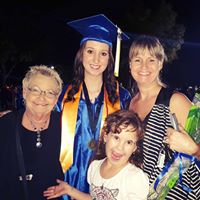
Erika Johns Matthew Vogel
view source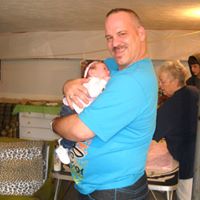
Matthew Vogel
view source
Matthew Vogel
view source
Matthew Vogel Tropiano
view source
Matthew Vogel
view source
Matthew Vogel
view source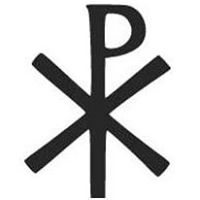
Matthew Eden Vogel
view source
Matthew Vogel
view sourceMyspace
Googleplus

Matthew Vogel
Education:
OHSU School of Dentistry - Dentistry, University of Oregon - Majors in Biology and Human Physiology; Minors in Chemistry and Business
Relationship:
In_a_relationship

Matthew Vogel
Education:
Wharton School of the University of Pennsylvania - Marketing & OPIM, University of Pennsylvania - Computer Science

Matthew Vogel
Education:
Los Angeles City College - Human Services/ Drug and Alcohol
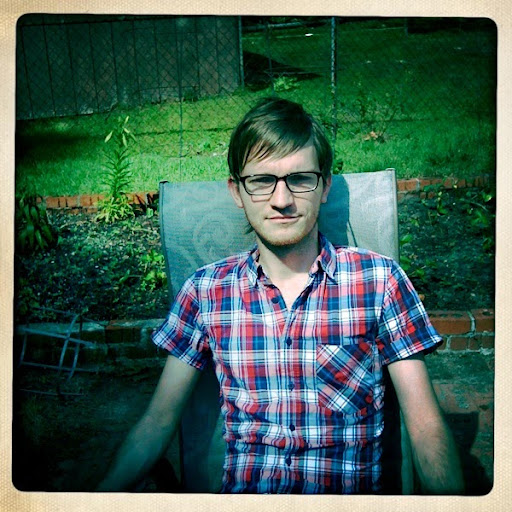
Matthew Vogel
Education:
Old Dominion University - Physics
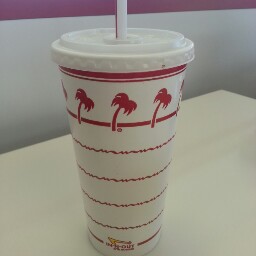
Matthew Vogel

Matthew Vogel

Matthew Vogel
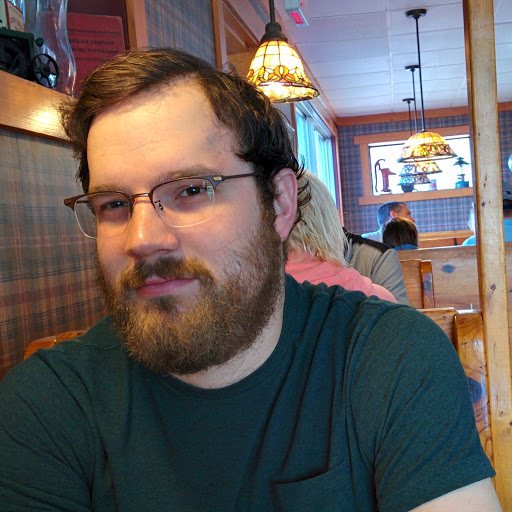
Matthew Vogel
Get Report for Matthew X Vogel from Syracuse, UT



















